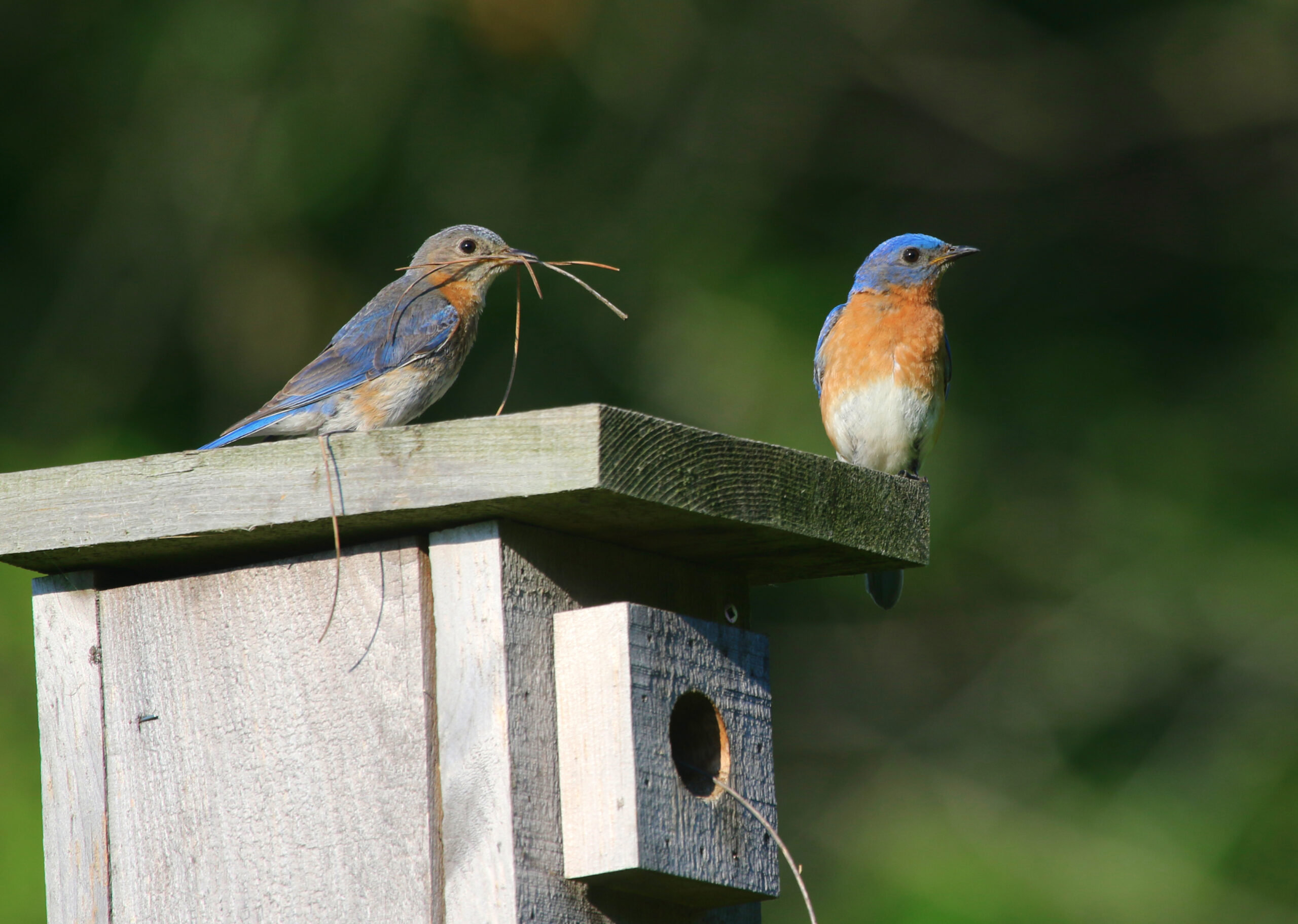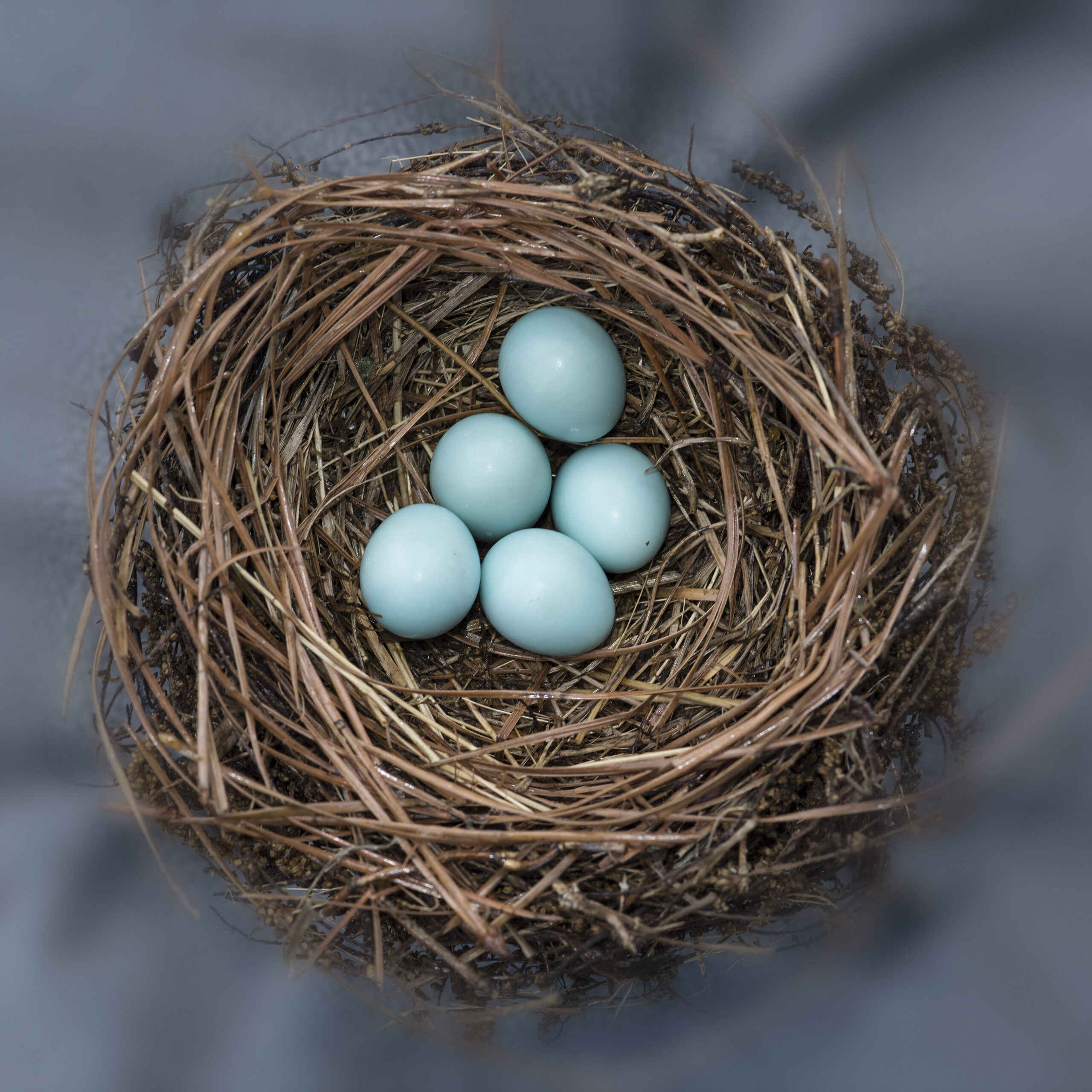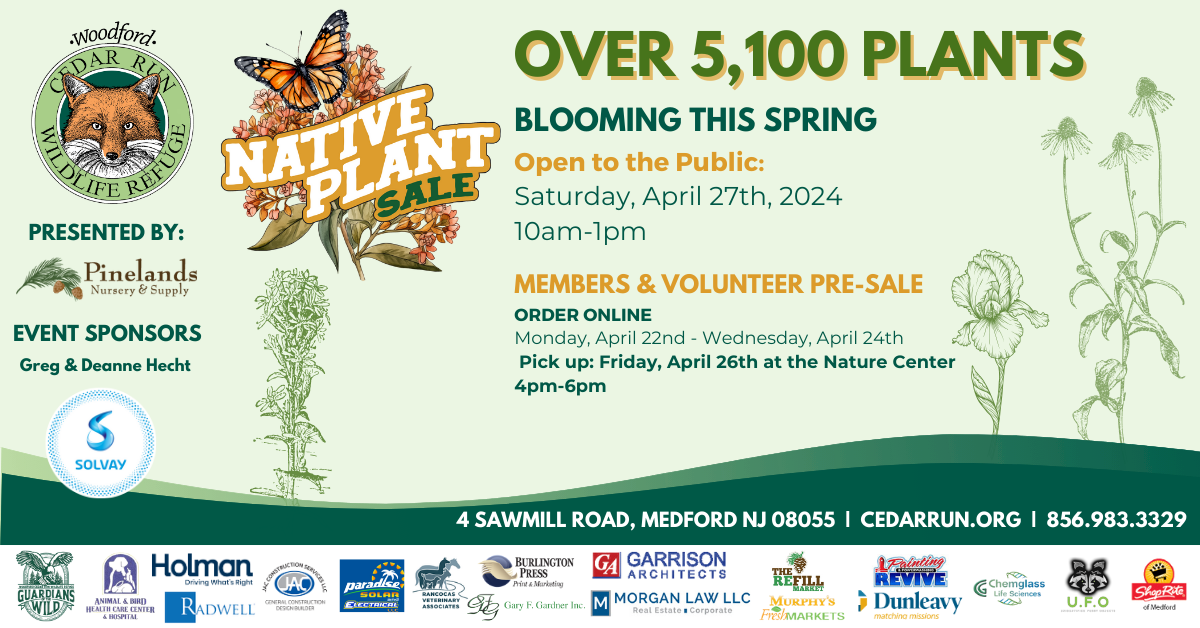Life Stages of Bluebirds
By Ally Reagle, Educator
 Why is it important for scientists to study the life cycle of different species? Well, it is no secret that humans alter the natural order of every habitat on planet Earth. There is no ecosystem in our modern world that is free from anthropogenic impacts. In order to thoroughly understand how our actions are affecting different organisms, we must first understand their natural life cycle.
Why is it important for scientists to study the life cycle of different species? Well, it is no secret that humans alter the natural order of every habitat on planet Earth. There is no ecosystem in our modern world that is free from anthropogenic impacts. In order to thoroughly understand how our actions are affecting different organisms, we must first understand their natural life cycle.
Eastern bluebirds’ lifecycles have been well documented through the monitoring of nest boxes. You have the ability to witness these birds transform from tiny eggs to fully mature adults in your very own backyard (or here at Cedar Run!) In just a few short weeks, we will begin seeing nests in our bluebird boxes. This signals that a male has successfully courted a female, meaning he has persuaded her to be his mate for the season by singing and fluttering his wings. The female quickly gets to work weaving pine needles and grasses together to form a cup-shaped nest in a suitable cavity. She lines the nest with finer grasses and the occasional animal hair or feathers to keep her future eggs warm.
The majority of bluebird eggs are… you guessed it, blue! However, about 5% of all female bluebirds will lay white eggs their whole life as a genetic mutation. Don’t worry, these eggs will still hatch into the normal-colored bluebirds we all love. It does not indicate an albino or leucistic nestling inside. We will be sure to keep you updated if we find any rare white eggs during our research! The average clutch size is about 4-5 eggs, but a female can lay anywhere from 2-7 eggs in a single nesting attempt. Bluebirds can have anywhere from 1 to 3 nesting attempts, also known as broods, in a single season.
 Beginning the day the last egg is laid, momma bluebird will incubate the eggs until they begin to hatch. Papa bluebirds don’t contribute much at this point because they do not have a brood patch, which is a spot of featherless skin on the underside of a bird that develops during nesting season. Brood patches facilitate better incubation through improved body heat transfer (ie: skin-to-egg contact as opposed to feather-to-egg contact)
Beginning the day the last egg is laid, momma bluebird will incubate the eggs until they begin to hatch. Papa bluebirds don’t contribute much at this point because they do not have a brood patch, which is a spot of featherless skin on the underside of a bird that develops during nesting season. Brood patches facilitate better incubation through improved body heat transfer (ie: skin-to-egg contact as opposed to feather-to-egg contact)
About 12-14 days later, naked baby birds will begin hatching from these eggs. On the second day after emergence, their skin looks blueish-black as their feathers begin to develop beneath it. On days 5 and 6, they will begin opening their eyes. On days 7 and 8, they are able to maintain their own body temperature. On day 11, wing feathers will start to emerge on these babies. By day 15 and 16, they are fully feathered and approaching their final days in the nest. This rapid development requires lots of food. Both parents are responsible for feeding the nestlings up to every 30 minutes. Sometimes “siblings” from previous broods will also help feed the new nestlings.
On days 17 and 18, the bluebirds are considered fledglings, or as we like to call them in the wildlife hospital, the ugly teenagers of the bird world. They begin pushing boundaries and attempting to fly. After some failed attempts, they eventually take off and begin this process all over again.
References:
https://www.allaboutbirds.org/guide/Eastern_Bluebird/lifehistory
https://www.audubon.org/field-guide/bird/eastern-bluebird
http://www.nabluebirdsociety.org/PDF/Getting%20Started%20Factsheet%20July2021.pdf

